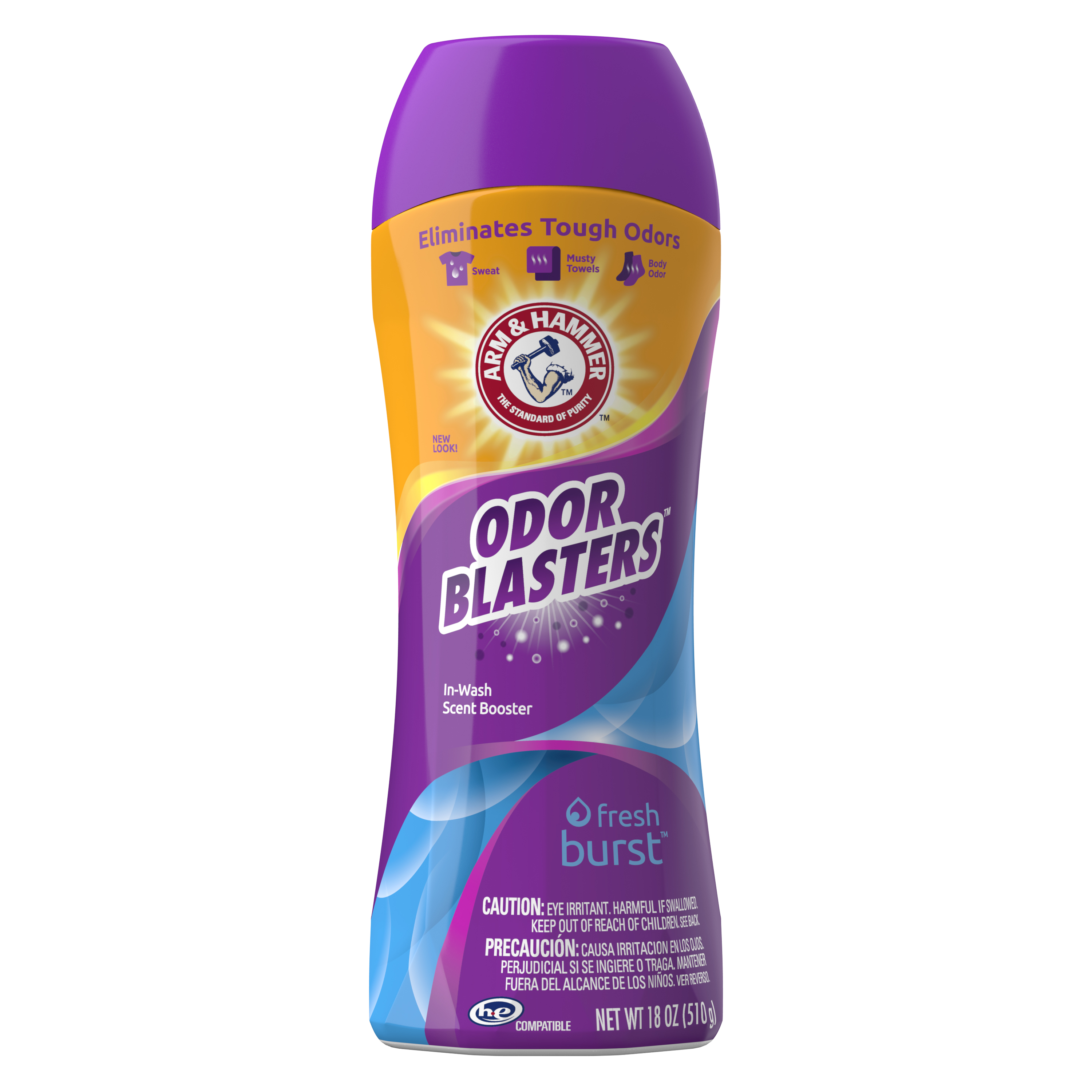How to Wash and Dry Different Kinds of Natural and Synthetic Fabrics

When you’re doing laundry, one of the considerations for how to wash an item is its fabric. Use this guide from ARM & HAMMER™ laundry to help you know how to wash different kinds of fabrics, whether natural or synthetic.
All instructions below are provided for your information and education, but you should always read the item’s care label and follow the recommendations there. When using a laundry detergent or stain spray, follow the directions on the packaging and always check for colorfastness on an inconspicuous area of the item before washing.
How to Wash Natural Fabrics
Natural fabrics are made of fibers that come from plants or animals and tend to be exposed to fewer chemicals in the manufacturing process. Natural fabrics can be easy to care for, like cotton, or require more attention to how you wash and dry them, like wool and silk.
What is Wool?

Wool is made from shearing animal hair from sheep, goats, alpaca, camels, and rabbits, then washing, carding, and spinning the fibers into thread that is then woven or knitted into fabric. There are many types of wool you might see on your item’s label, including cashmere, Shetland, mohair or merino wool, lambswool, camel hair, angora or alpaca. Wool is known for its durability, breathability, and insulation properties, which is why it’s often found in cold-weather gear and sweaters. It can also be finely woven into expensive suits and dresses.
How to Wash Wool
- Washer Setting & Temperature: Hand wash in cold water or machine wash, (if recommended on label), on the Gentle, Delicate or Wool cycle in cold water, with a mild detergent.
- Dryer Setting: Air dry wool items to avoid shrinking. Dry flat to help prevent the item from stretching or becoming misshapen.
- Do’s: Use a gentle detergent and turn items inside out before washing.
- Don’ts: Avoid chlorine bleach, fabric softener and hot water. Do not scrub or rub fabric together roughly to avoid pilling..
- Recommended detergent: ARM & HAMMER™ Sensitive Skin Free & Clear Liquid Laundry Detergent.
What is Linen?

Linen is a woven, breathable fabric that’s made from flax fibers. It’s very durable and highly breathable (flax fibers are hollow). Linen is commonly used for lightweight summer clothes as well as sheets, tablecloths, dinner napkins and more. As a natural fiber, linen will shrink some (about 4% on average) on the first wash if the item is not pre-washed.
How to Wash Linen
- Washer Setting & Temperature: Gentle cycle (check the label), warm water or cool if the items are brightly colored and you want to minimize fading.
- Dryer Setting: Tumble dry low or line dry
- Do’s: Avoid chlorine bleach or fabric softener.
- Recommended detergent: ARM & HAMMER™ Plus OxiClean Fade Defense Liquid Laundry Detergent.
What is Cotton?

Cotton is an extremely common fabric for clothing, bedding and household items. Most times, cotton is blended with other fabrics, creating an affordable, durable, and flexible textile that can handle a variety of washing methods. 100% cotton requires a bit more care as it can be more prone to fading and shrinking. Cotton items embellished with appliques, lace or ribbon are better washed on the delicate cycle.
How to Wash Cotton
- Washer Setting & Temperature: Typically, cotton can be washed on any washer setting and in any temperature. Default to Normal Cycle and Warm water and defer to the item’s care label.
- Dryer Setting: Tumble dry medium or low.
- Do’s: Pretreat stains, separate clothing by color or soil level, use odor or stain-fighting detergent, and turn cotton shirts inside out before washing
- Don’ts: Cotton is fairly forgiving but will shrink about 5% in hot water.
- Recommended detergent: ARM & HAMMER™ Plus OxiClean, Clean Meadow, Stain Removing High Efficiency (HE) Liquid Laundry Detergent.
What is Silk?
Silk is known for being incredibly soft, smooth, lightweight, and luxurious. The hypoallergenic fibers are breathable and absorbent, helping you feel cool in warm temperatures and helping insulate in cold. Whether it’s a silk scarf, pajamas, or you’re sleeping in luxury on silk sheets and pillowcases, silk is a smooth, soft, and well, silky fabric you want to take good care of – and that usually means hand washing or dry cleaning.
How to Wash Silk
- Washer Setting & Temperature: Hand wash delicate silk items in cold water in a sink or basin using a mild detergent without fabric softener or chlorine bleach.
- Dryer Setting: Never put silk items in the dryer. Air dry but do not expose to direct sunlight.
- Do’s: Use a gentle detergent and gentle agitation when washing silk items. Treat stains by using a mild detergent and gently rubbing with your fingers.
- Don’ts: Avoid chlorine bleach, direct sunlight, hot water, and vigorous scrubbing.
- Recommended detergent: ARM & HAMMER™ Clean Burst Liquid Laundry Detergent.
How to Wash Synthetic Fabrics
Many of the items in your closet or dresser or that you use or wear every day are made of synthetic fabrics. Synthetic fabric is made up of fibers that were created through a chemical process, usually from coal or petroleum, instead of derived from plants or animals. Often synthetic fabrics are strong, durable, elastic, and moisture-wicking, making them desirable for clothes, bedding, and drapery.
Since the fibers in synthetic fabrics are plastic polymers, you have to be careful with heat or hot water. It’s harder to break a synthetic fiber, but you can melt them. Common synthetic fibers are: polyester, nylon, neoprene, spandex, acrylic, microfiber, rayon, and fleece.
What is Polyester?
Polyester or PET is a lightweight, wrinkle-resistant, moisture-wicking, quick-drying, inexpensive synthetic fabric made from oil products. Polyester is common in fast fashion, athletic and outdoor wear and can be blended with cotton for a lot of apparel items, especially 50/50 or tri-blend t-shirts.
How to Wash Polyester
- Washer Setting & Temperature: Normal cycle, in warm water.
- Dryer Setting: Permanent Press” cycle, or tumble dry low or cool.
- Do’s: wash polyester items with similarly colored items, pre-treat stains, use your favorite laundry detergent, add vinegar to the wash to soften and reduce odor.
- Don’ts: Avoid chlorine bleach, direct sunlight, hot water, and vigorous scrubbing
- Recommended detergent: ARM & HAMMER™ Clean Burst Liquid Laundry Detergent.
What is Fleece?

Fleece is a synthetic fabric made from petroleum and recycled plastics that are melted down, spun into fibers, woven into a fabric, and brushed to create the signature fluffiness. Fleece can also contain small amounts of natural or synthetic fibers such as hemp, rayon, or wool. Fleece is notorious for pilling and shedding microfibers that do not biodegrade and end up in your wastewater. Your goal is to reduce the amount of friction on the fabric’s surface and avoid heat with fleece. Exposing fleece to heat melts the fibers, changes the texture, and can cause it to shrink.
How to Wash Fleece
- Washer Setting & Temperature: Gentle cycle, cold water.
- Dryer Setting: Hang dry, no heat, or lowest possible dryer heat for shortest time.
- Do’s: Use a laundry pre-treatment solution for stains, use a mild laundry detergent that works well in cold water, turn fleece jackets inside out before adding to the washer.
- Don’ts: Avoid chlorine bleach or fabric softener when washing fleece. Do not rub fleece together to remove stains. Avoid heat and hot water.
- Recommended detergent: ARM & HAMMER™ Clean Burst Liquid Laundry Detergent.
What is Rayon?
Rayon, also known as viscose, is a semi-synthetic silk substitute fabric made from cellulose fibers from wood pulp. Rayon drapes beautifully and its fibers hold dye well. It’s lightweight and breathable making it a popular choice for summer shirts and dresses as well as scarves or ascots, nightgowns, robes and lingerie.
Rayon or Viscose washing instructions
- Washer Setting & Temperature: If not labeled dry clean only, hand wash in cold water. Do not machine wash rayon unless recommended on the label, and then use a delicate cycle, cold water, with the item in a mesh bag.
- Dryer Setting: Do not dry rayon or viscose in the dryer. Air dry only..
- Do’s: Use a mild laundry detergent that works well in cold water, remove items promptly, reshape before drying, and use a steamer to remove wrinkles.
- Don’ts: Avoid chlorine bleach, fabric softener and exposing the fabric to heat or hot water. Do not wring or twist.
- Recommended detergent: ARM & HAMMER™ Clean Burst Liquid Laundry Detergent.
What is Acrylic?

As a cheaper alternative to wool and with the ability to be woven into a variety of fabric types, acrylic is everywhere from socks to coat linings, to sweatshirts, blankets, sweaters and cold weather gear like hats, gloves, scarves, and boot liners. Acrylic is made from polyacrylonitrile polymers made from oil and coal. It’s known for its insulating properties and for how soft it is! Some acrylic is blended with additional synthetic polymers to make it elastic or flame retardant, making it useful for drapes and curtains as well as sleepwear.
How to Wash Acrylic Fabrics
- Washer Setting & Temperature: Low-spin cycle such as Delicates, cool water Dryer Setting: Tumble dry on low heat. .
- Dryer Setting: Tumble dry on low heat.
- Do’s: Use a laundry pre-treatment solution for stains, use a mild laundry detergent that works well in cold water, turn items inside out to help reduce pilling.
- Don’ts: Avoid chlorine bleach or fabric softener when washingacrylic . Avoid heat and hot water.
- Recommended detergent: ARM & HAMMER™ Clean Burst Liquid Laundry Detergent.
What is Nylon or Lycra ?
Nylon was the first synthetic fabric made, debuting in 1931 as silk substitute made of thermoplastic fibers created from oil and coal. Lycra, aka spandex appeared in the 1950s, and is also made from petroleum through a completely manufactured process. Spandex is known for its amazing elasticity; it can stretch more than 100% and snap back into shape.
How to Wash Nylon or Lycra
- Washer Setting & Temperature: Hand wash or low-spin cycle such as Delicates in cold water.
- Dryer Setting: Tumble dry on low heat.
- Do’s: Use a laundry pre-treatment solution for stains, use a mild laundry detergent that works well in cold water, turn items inside out to help reduce pilling.
- Don’ts: Avoid chlorine bleach or fabric softener when washing nylon or lycra. Avoid heat and hot water.
- Recommended detergent: ARM & HAMMER™ Clean Burst Liquid Laundry Detergent.
What is Microfiber or Microsuede?
Microfiber and microsuede are synthetic fabrics made of polyester and polyamide or polyester and nylon, which themselves are plastic polymers derived from petroleum. Microfiber is often used for cleaning cloths to trap dust and dirt and athletic wear to wick away moisture from your skin. Microsuede fabric is similar to microfiber but the ends are not split. Microsuede is used for upholstery, bedding, and clothing as an animal-free imitation suede that’s soft and durable. Do not combine microfiber with other fabrics in your laundry as the microfiber will attract and trap lint shed by these other fabrics and never again have the same look and feel.
How to Wash Microfiber
- Washer Setting & Temperature: Normal cycle, warm or cold water with extra rinse cycle.
- Dryer Setting: Low or no heat. Be sure to thoroughly clean the lint trap prior to drying.
- Do’s: Hand wash separately or machine wash only with other microfiber items.
- Don’ts: Avoid chlorine bleach, fabric softener, dryer sheets, or laundry detergent with fragrance or additives when washing microfiber; these can interfere with the fabric’s ability to trap dust and dirt. Do not iron or use high heat.
- Recommended detergent: ARM & HAMMER™ Clean Burst Liquid Laundry Detergent.
Laundry Detergents for All Your Fabric Washing Needs
Try one of these ARM & HAMMER™ Laundry Detergents for whatever fabric you’re washing today.


